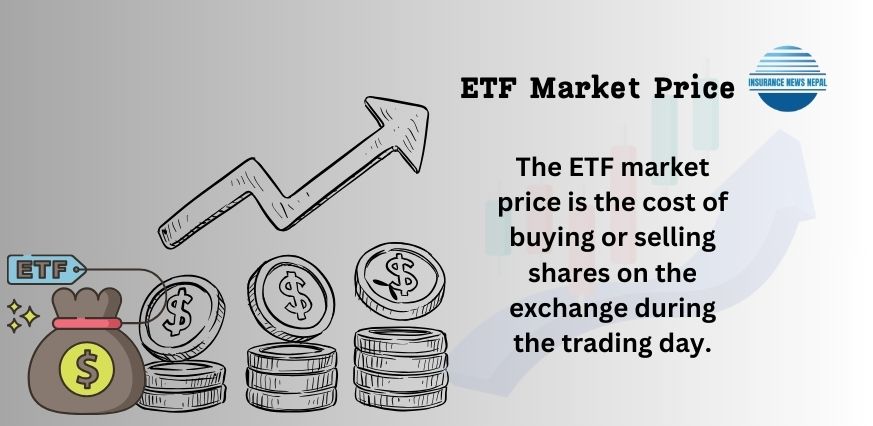
[ez-toc]
What is the ETF Market Price?
The ETF market price is the cost of buying or selling shares on the exchange during the trading day. When shares of an exchange-traded fund (ETF) are available for purchase or sale during the day on a stock market, this is the constantly fluctuating price. The market price, as opposed to a set price, is determined by a dynamic dance between the amount that buyers and sellers are willing to pay. Like the commotion of a market, it shifts as more people move in or back out.
What is the market closing price of ETF?
The ETF market price shows how many shares are bought or sold during the day, while the net asset value (NAV) is the value of each share’s piece of the fund’s assets at the day’s end. Imagine the bustling marketplace at closing time. Shops wind down, prices are finalized, and a snapshot of the day’s activity is captured. That’s essentially what the ETF closing price signifies: a crucial point in the day’s journey, offering insights into investor sentiment and performance.
Why is the closing price important?
Benchmark for Performance: The ETF’s daily performance is measured against this benchmark. About the previous closing price, did it increase or decrease? This is a brief overview of the mood among investors and the market dynamics that influenced trade during the day.
Basis for NAV Calculation: At the end of the day, the Net Asset Value (NAV) of the ETF is determined using the closing prices of its underlying assets. Interpreting the link between NAV and market value is made easier with an understanding of the closing price.
Market Trend Indicator: As time goes on, closing prices may disclose more general trends in particular industries or investment topics. Monitoring the closing prices of pertinent ETFs might provide insightful information for long-term investing plans.
What is the Role of Market Price?
Imagine a bustling marketplace where vendors are displaying their wares. There is a price tag on every item, but here’s the catch: it isn’t set in stone. It resembles a vibrant dance between buyers and sellers, always shifting based on what buyers desire, how much supply there is, and even what’s in style at the moment. We refer to that as the market price.
In the realm of finance, which includes financial instruments like bonds, stocks, and exchange-traded funds (ETFs), the market price is a critical component. It’s the price that never stops changing, indicating to you how much you can swap for those monetary items at any given time.
Think of it as a bidding battle for something you truly desire. It becomes more expensive if more people desire it. But the price may go down if not many people are interested. The market price is akin to a momentary snapshot of what the entire market is thinking at that precise instant. It resembles the general attitude of the market!
Comparison of ETF Market Price and ETF Net Asset Value
The market price of an ETF is the price at which it trades on the open market, influenced by investor demand and supply. In contrast, the ETF Net Asset Value (NAV) is the calculated value of the underlying assets minus liabilities per share. While market price fluctuates throughout the trading day, NAV is typically calculated at the day’s end. Discrepancies between market price and NAV can indicate premiums or discounts, offering insights into investor sentiment and potential arbitrage opportunities.
You may also like:
FAQs
Why Can an ETF's Market Price Differ From the NAV?
What Is the Main Difference Between Market Price and NAV?
What is the net price of an ETF?
Conclusion
The ETF market price is like a price tag in a busy market, always changing based on what people are willing to pay. The closing price gives us a snapshot of the day’s action and helps measure how well the ETF did. It matters because it’s a performance benchmark, guides NAV calculation, and shows market trends. Sometimes, the market price doesn’t match the NAV due to factors like supply, demand, and investor sentiment. It’s like a financial dance that keeps shifting throughout the day.

